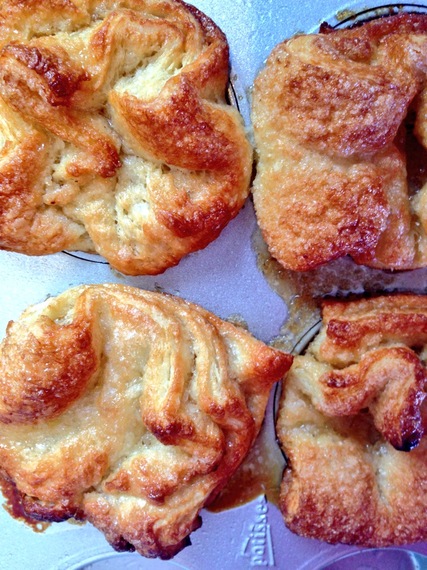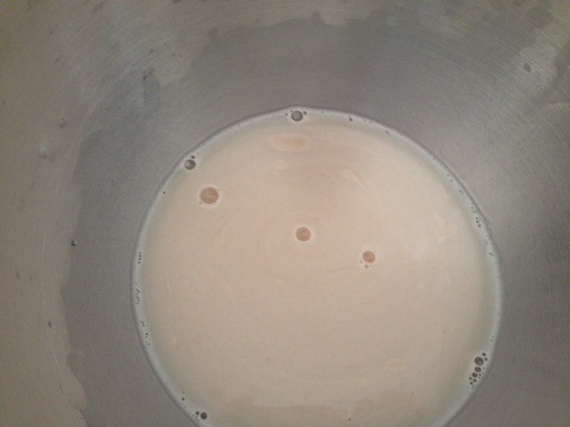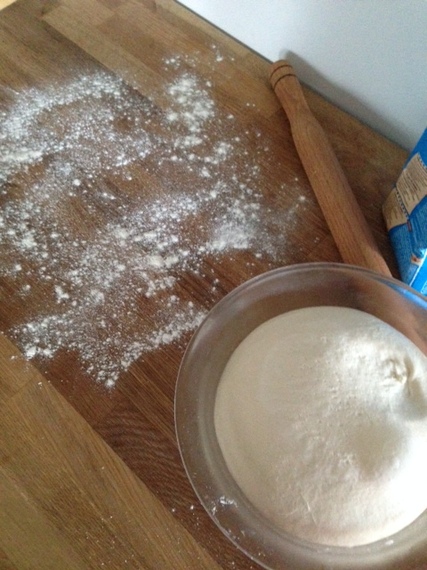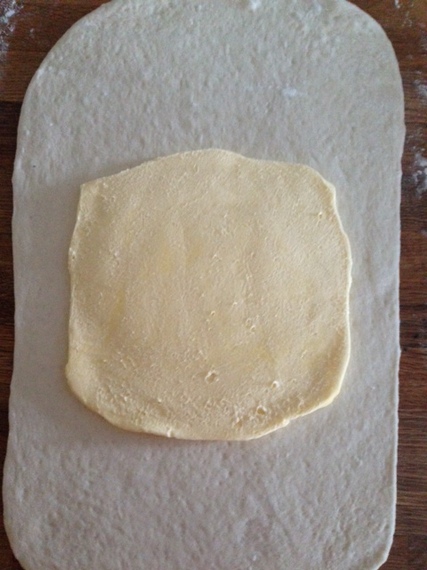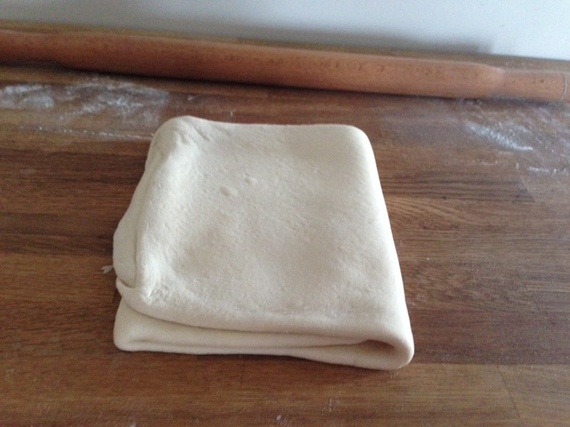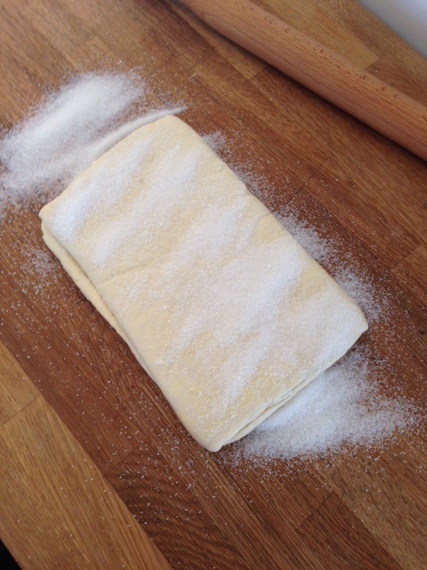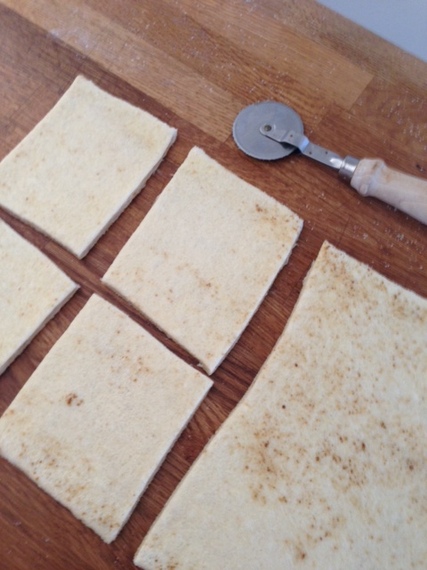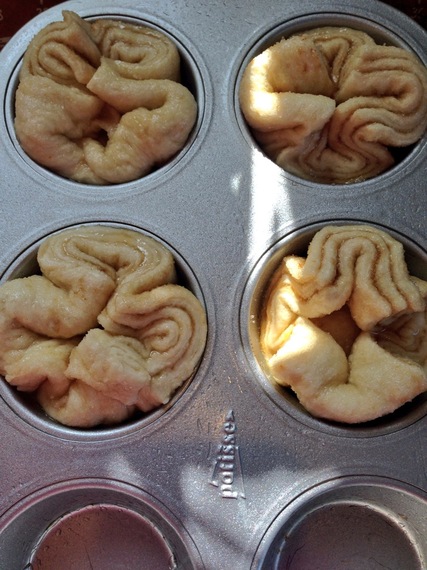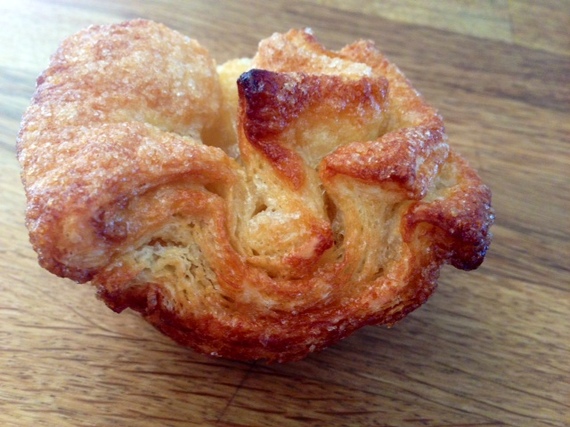I have recently become intrigued with regional desserts. It started in Germany when I sampled Baumkuchen, a type of buttery and flaky cake that is painted onto a spit and cooked over an open fire.
I have begun to collect my provincial recipes like postcards. Each one takes me back, reminding me of a place I have visited. On a recent Sunday, I decided to dust off my recipe for Kouign Amann. I made some individual Kouign Amann for Sunday brunch and happily posted pictures of the steps on Facebook and Twitter (the perfect way to kill time between the folds and turns of making laminated dough). I had so many requests for the recipe that I thought I would go ahead and share it here. My technique breaks a bit with tradition, and (in my opinion) simplifies the whole process.
For those of you not familiar with the delicious, buttery, flaky, pastry that is Kouign Amann, here's a bit of history. Kouign Amann is a cake that first originated in the 1800s in Brittany, France. The cake derives its name from the Breton words for cake "kouign" and butter "amann." It contains layers of butter and sugar folded into a yeast dough. In France Kouign Amann is often served with fillings of fresh fruit, chocolate, or even coconut. The filling is nestled within the layers of flaky dough. For many people making laminated dough sounds intimidating, but it really is quite easy. I know, I know, a professional pastry chef calling it "easy" probably isn't going to put anyone at ease. Here are a few simple tips to help simplify the process, and get you on your way to making the perfect Kouign Amann.
•The quality of the butter is very important when making Kouign Amann. The butter will impart a great deal of flavor into the pastry. Therefore, you should use the best quality butter you can find. I like to use Plugra or Kerry Gold.
•Be sure to use salted butter! Most of the time in the pastry kitchen we use unsalted butter, but in this case you really want to have a hint of salt to balance out the sweetness. In fact, I have never seen a recipe for Kouign Amann that was worth its salt (sorry, couldn't resist) that called for unsalted butter.
•Work quickly and in a cool environment. The key to any laminated dough is for the butter to be rolled and layered into the dough. If it warms and begins to melt into the dough, you won't get those nice flaky layers. So make sure your kitchen is cool. Try to avoid touching the dough too much, and work quickly.
•Lastly, and this is where I break with tradition. Do not layer your sugar into the Kouign Amann until the final turn. Sugar is hygroscopic, which means that it readily absorbs moisture from the environment. If you layer the sugar into the dough too early on, it tends to get very wet and tacky. This makes it harder to roll and fold the dough. I think you get the best result if you focus on getting perfect layers, and then add the sugar in the final turn.
Kouign Amann
Makes 12 individual "cakes"
1 cup warm water
2 teaspoons active dry yeast
1 cup plus 1 tablespoon sugar, divided use
¼ cup dark brown sugar (I like the flavor brown sugar imparts, for a milder caramelized flavor use all white sugar instead)
2 cups plus 2 tablespoons all-purpose flour, plus additional for dusting
1 teaspoon salt
6 ounces salted butter
In a large bowl (or in the bowl of a stand mixer) combine the warm water (it should be about 105°F) with the yeast and one tablespoon of sugar. Stir the mixture and allow it to sit for several minutes, until the yeast dissolves.
Add the flour and salt to the yeast. If using a stand mixer, knead the dough with the dough hook on medium-high speed for about 8 minutes, or until smooth and elastic. If kneading by hand, knead the dough for at least 10 minutes, or until smooth and elastic. If the dough is still tacky you can add a few extra tablespoons of flour while kneading.
Place the dough into a greased bowl. Cover the bowl lightly with plastic wrap or a kitchen towel and place it in a warm place for about 1 hour or until doubled in volume. Punch down the dough and allow it to rest for several hours or up to overnight. While the dough rests, remove the 6 ounces of butter from the fridge. Place the butter between two sheets of parchment paper and pound it into a rectangle, about ¼ inch thick. Place the butter back into the refrigerator so that it remains chilled.
On a lightly floured surface, roll the dough into a rectangle that is also about ¼ inch thick.
The dough should be about 10inches wide and 18 inches long. Place the chilled and pounded rectangle of butter into the center of the dough.
Fold the top half and bottom half of the dough evenly over the butter. Once folded, be sure that the folds in the dough are facing towards you. Give the dough its first roll using a rolling pin (preferably French rolling pin). Roll the dough out evenly. Be careful not to pinch the edges of the dough, or to press down so hard that the butter begins to squeeze out. Roll the dough until it is a rectangle, almost as large as the rectangle you started with. If the dough sticks at all, use a bit of flour and a bench scraper to prevent sticking. Fold the top third of the dough down and the bottom third of the dough up, so that it again looks like a book, with the folds facing you.
Wrap the dough in parchment or plastic wrap and place it into the refrigerator for at least 30 minutes to chill. Repeat the above process two more times, each time rolling the dough out, folding the dough into thirds (so that there are three even layers of dough), make sure that the layers are facing you when you roll, and chill for at least 30 minutes between rolling and folding. You can leave the dough like this overnight if you wish, and do the final turn the next morning.
For the 4th and final turn, sprinkle a half cup of the granulated sugar on the work surface. Place the dough on top of the sugar and sprinkle one-fourth cup on top.
Roll the dough out. Fold the dough once more into thirds, top half down and bottom half up. Chill the dough for 20 minutes. Combine the brown sugar (if using) with the remaining white sugar, Sprinkle half on the work surface, place the dough on top and sprinkle the rest of the sugar evenly over the dough. Roll the dough out into a long rectangle, about 8 inches wide by 24 inches long. Cut the dough into two strips, and then cut the dough into 4"x4" squares.
Gather the squares up by the four sides. Place the center into a well-greased muffin tin, pulling the four corners towards the center of the muffin tin, so that it gathers up like a blossoming flower.
Repeat this process until all the muffin tins are filled with the dough. Place the Kouign Amann in a warm place to proof slightly. It should begin to puff slightly before you put it into the oven. While the Kouign Amann proofs, preheat the oven to 375°F, with a rack in the center position.
Bake the Kouign Amann for about 30 minutes, or until golden brown. Remove them from the oven and allow them to cool slightly. Only allow them to cool enough so that you don't burn yourself on the caramelized sugar when trying to handle them. Remove immediately from the muffin tins. If you leave them in the muffin tins until they cool completely they will be impossible to get out. Serve them warm or at room temperature.
